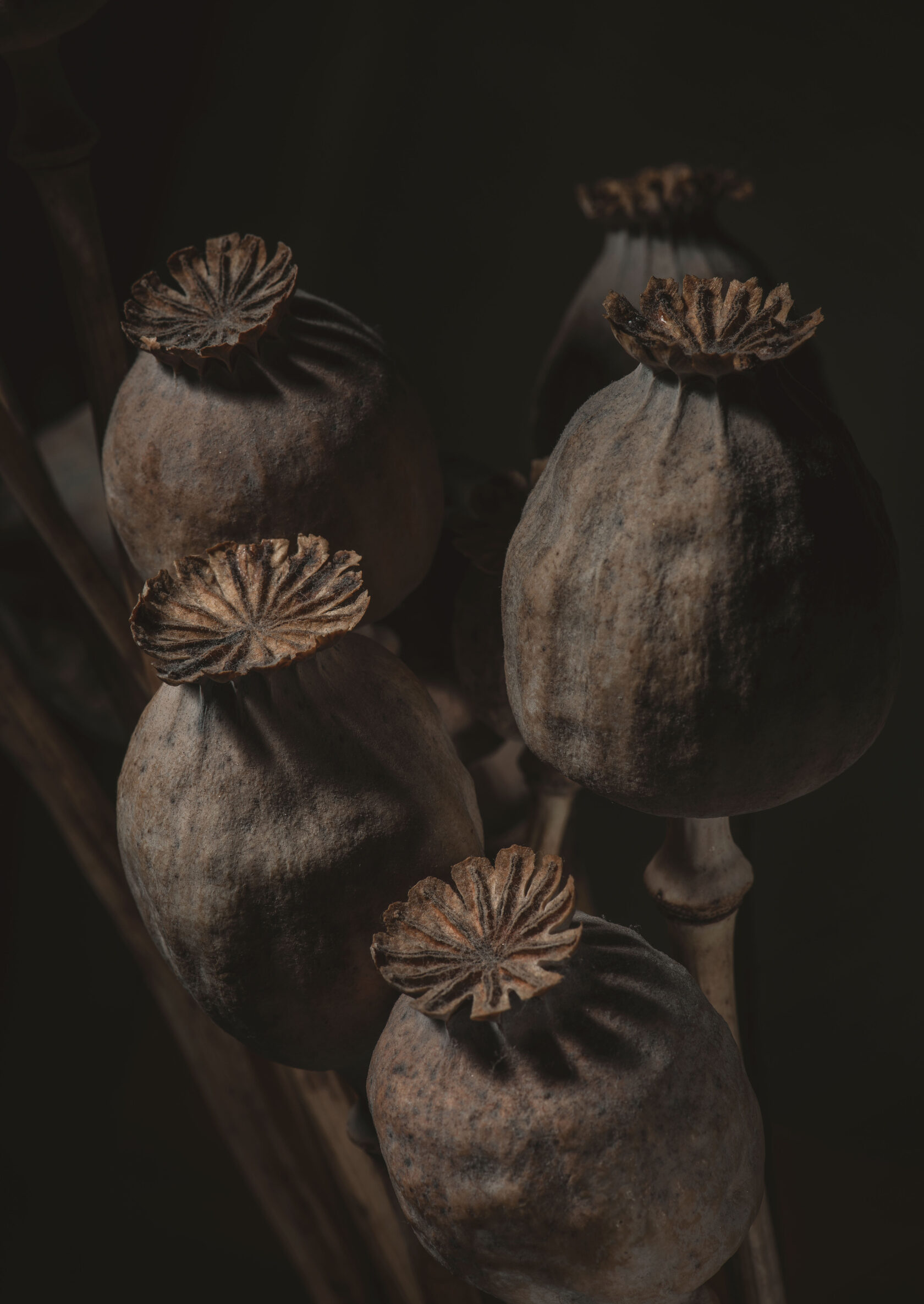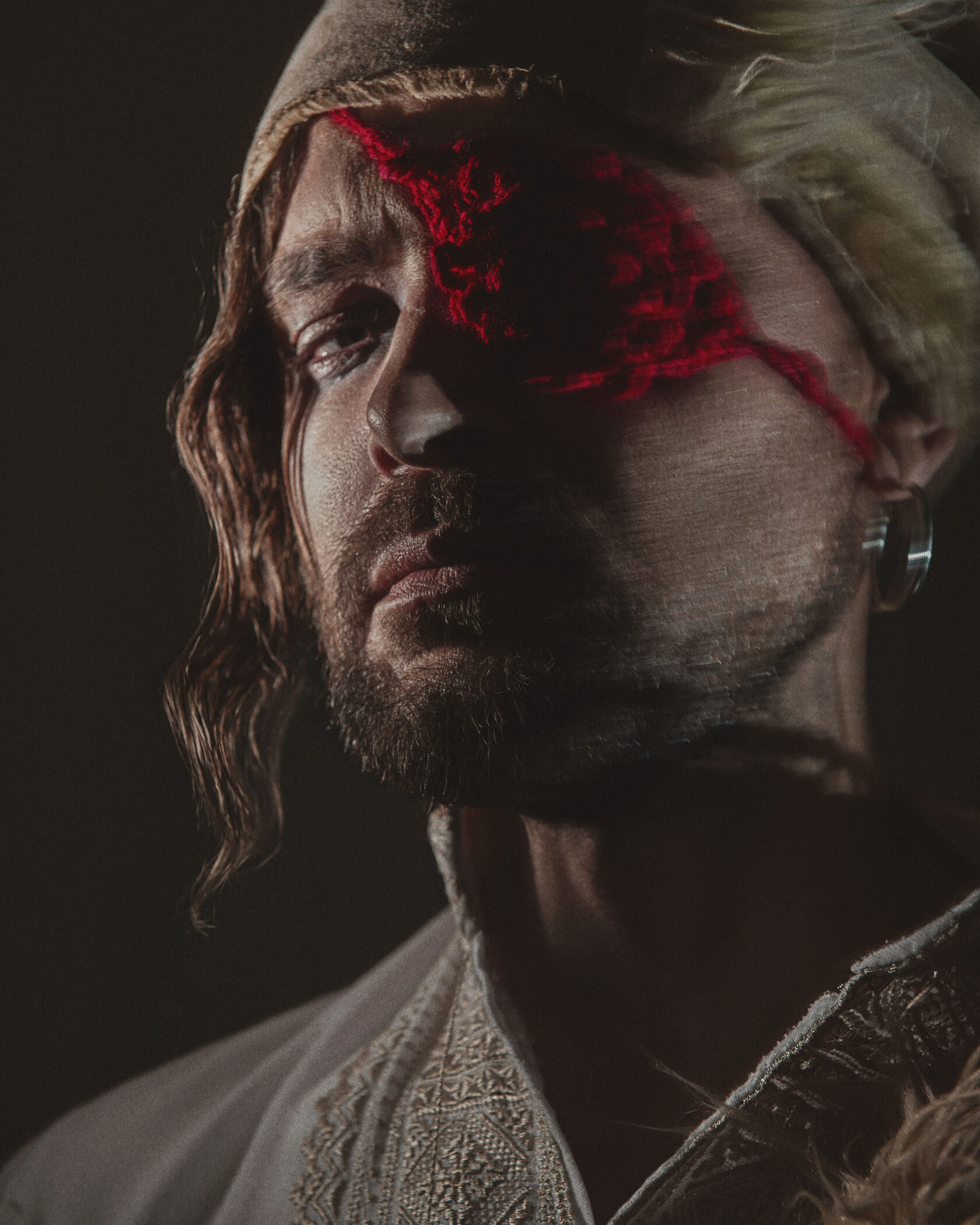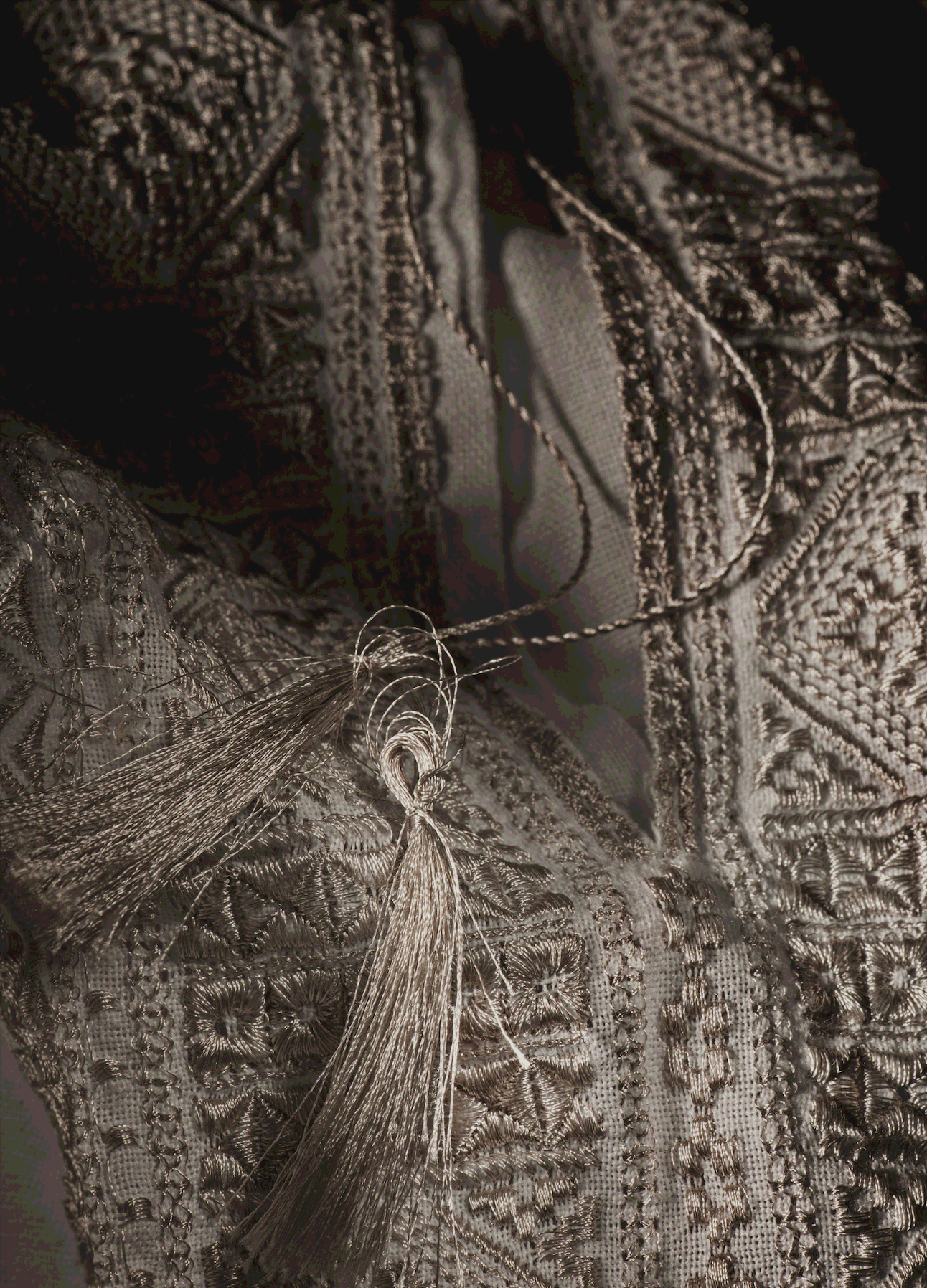STITCHED
"Stitched" is a photo project that is an emotional reflection of what is happening to all of us in the existing reality. We expressed the accumulated inner tension in the language of visual art using references to the cultural codes of unique Ukrainian traditions. That is the reason why we used some national Ukrainian motifs in a modern interpretation. This fine art project is about the importance of identity, about the value and uniqueness of every individual on this planet. We believe in the power of embedded meaning in creative works of art, therefore all of the costumes in this series are handcrafted from unexpected materials. Each image is thought out and filled with the visual meaning of sacral words that we repeat like a mantra, which helps us not to lose hope and believe in a better future.
We want
to immerse you
in the depths
of our mantra
to immerse you
in the depths
of our mantra

Confrontation [ ɒpir ] - as a struggle for
own right of self-identity.
Strength [ sylʌ ] - as strong
unity and freedom of choice.
Pride [ gɒrdistˈ ] - as a
point of success and
recognition.
Courage [ mʊʒnistˈ ] is like being responsible for the past generation and for all made decisions for beyond generations.
own right of self-identity.
Strength [ sylʌ ] - as strong
unity and freedom of choice.
Pride [ gɒrdistˈ ] - as a
point of success and
recognition.
Courage [ mʊʒnistˈ ] is like being responsible for the past generation and for all made decisions for beyond generations.





Despair [ rɒzpʌtʃ ] - as a driving force power in the case of irreversible events.
Heritage [ spʌdɒk ] as a precious mineral that we turn into a piece of jewelry for posterity.
Intelligence [ rɒʒʊm ]- as ability to see the non-obvious, and realize the obvious.
Creativity [ twɒrtʃistˈ ] - as the world language of creation with individual interpretation.
Heritage [ spʌdɒk ] as a precious mineral that we turn into a piece of jewelry for posterity.
Intelligence [ rɒʒʊm ]- as ability to see the non-obvious, and realize the obvious.
Creativity [ twɒrtʃistˈ ] - as the world language of creation with individual interpretation.





A look into the soul
[ pɒgljʌd w dʊʃʊ ] - as a penetrating empathy ability, communication on a mental level.
Generosity [ stʃedristˈ ] as the ability to help those in need.
Stealth [ skrytnistˈ ] - as national information codes, meanings for the preservation of identity.
Eternity [ witʃnistˈ ]- as fundamental, sacred natural values. Capital truths.
[ pɒgljʌd w dʊʃʊ ] - as a penetrating empathy ability, communication on a mental level.
Generosity [ stʃedristˈ ] as the ability to help those in need.
Stealth [ skrytnistˈ ] - as national information codes, meanings for the preservation of identity.
Eternity [ witʃnistˈ ]- as fundamental, sacred natural values. Capital truths.





Fragility [ kryhkistˈ ]- as a feeling of the non-eternity of everything & everyone.
Anger [ ʒlist' ] as a return coin that the enemy receives at the point of no return.
Anxiety [ trywogʌ ] as an exceptional intuition.
Tension [ naprugʌ ] as absolute self-control.
Anger [ ʒlist' ] as a return coin that the enemy receives at the point of no return.
Anxiety [ trywogʌ ] as an exceptional intuition.
Tension [ naprugʌ ] as absolute self-control.





We are all filled up with emotions that define our identity. And inside of each of us is sewn up a DNA code that is unique and beautiful. The myriad variety of diverse of natural patterns around the world creates magnificent canvases, but one detail brings together all of them. The crossing of red threads unites all mankind.
And those connections remind us that we are all equally red inside.
And those connections remind us that we are all equally red inside.



Natasha VOLK - photographer & art director.
Winner of the leading industry contests: International Photography Awards, Fine Art Photography Awards, EUROPEAN FASHION DISTINCTION AWORD; London International Creative Competition.
Winner of the leading industry contests: International Photography Awards, Fine Art Photography Awards, EUROPEAN FASHION DISTINCTION AWORD; London International Creative Competition.
Natasha VOLK
Serge LION
Vlady LOEWE
Vlady LOEWE - International window decorator and image responsible.
Handmade creator of interior decorations
Artist with free flight of imagination
Handmade creator of interior decorations
Artist with free flight of imagination
Serge LION – Visual Artist, Fashion & Beauty Expert, Stylist, Hair & Makeup Artist, and Photographer. Founder and Lead Multidisciplinary Artist at S.L. Fashion & Beauty Production.
»
"This project was created in co-authorship by the artist Serge Levchenko, performer Volodymyr Tyshchenko and photographer Natalia Volk.
The war, unleashed by Russia against Ukraine, brought thousands of deaths and caused the emigration of millions of people. Alongside this, the role of Ukraine in Europe has instantly changed: from the land, known for its so-called "east-European vibe" to the fortress, protecting the democratic values of the world in the face of Russian terrorism. This image of Ukraine can be seen on the news headlines worldwide... "
The war, unleashed by Russia against Ukraine, brought thousands of deaths and caused the emigration of millions of people. Alongside this, the role of Ukraine in Europe has instantly changed: from the land, known for its so-called "east-European vibe" to the fortress, protecting the democratic values of the world in the face of Russian terrorism. This image of Ukraine can be seen on the news headlines worldwide... "

Maria Vtorushina
Curator, resaarcher,
Set Foundation co-founder
Set Foundation co-founder
Maria Vtorushina
Curator, resaarcher, Set Foundation co-founder
STITCHED
This project was created in co-authorship by the artist Serge Levchenko, performer Volodymyr Tyshchenko and photographer Natalia Volk.
The war, unleashed by Russia against Ukraine, brought thousands of deaths and caused the emigration of millions of people. Alongside this, the role of Ukraine in Europe has instantly changed: from the land, known for its so-called "east-European vibe" to the fortress, protecting the democratic values of the world in the face of Russian terrorism. This image of Ukraine can be seen on the news headlines worldwide.
Ukrainians have an unshakable will for freedom and the ability to fight against dictatorship and tyranny: the work of artists and thinkers from various fields (since the medieval) is a huge part of this spirit.
"God is in the heart of this city. The city won't shake. God will protect it from the first-morning dawn" [Psalm 45:6]. The words in Greek rave on the golden background above the 5.4-meter figure of Madonna in Kyiv's St. Sophia cathedral. Byzantine masters finished this ambitious project in 1037. Structured as St. Sophia of Constantinople, the cathedral was aimed to be a symbol of Kyiv's legacy as an heir and successor of Byzantium. Main government decisions were approved nearby by viche — direct democratic elections, the core of Ukrainian social structure — even before the cathedral was erected. Revolutions of Dignity, known as Maidan in 2014 and Orange Revolution in 2007 in Kyiv were considered viches by participants, gathering in the same areas.
The Ukrainian Renaissance burst in the XVI century and moved from Lviv to the East to celebrate the rise of independent Cossack states. Cossacks were peasants and warriors, who started to settle in the East of Ukraine in the XV century. People who refused to obey Moskovian or Polish authorities came to join the free community. Cossack self-organized armies defended Ukrainian autonomy from Russia till the end of the XVIII century. In 1775, Russian troops burned to the ground the main Cossack fortress in the East of Ukraine. Russian soldiers killed every Ukrainian they could reach. Cossack Madonna is a clue plot in the painting of the time of resistance. Maria holds the veil in her hands, covering the people, gathered around her. Ukrainian anonymous artists portrayed Cossack leaders and their surroundings, protected under Madonna's veil. This iconography is unique to the Eastern Christian tradition, yet has similarities with the Western plot: Virgin Of Mercy. The Cossack Madonna became a symbol of the Ukrainian army, whose soldiers didn't have the luxury to experience peace for centuries, defending people's freedom from the Russian Empire, Bolsheviks' terror, and the Soviet totalitarian machine — "There is a fight; I'm on the battlefield, Where all my soldiers are the words I wield, And treason's sown by memories that scramble." — the lines belong to Vasyl Stus, Ukrainian brightest poet, human rights activist, dissident, and hero. Stus spent his youth in Donetsk, on the East of Ukraine. His adult life was stretched between Kyiv and Russian prisons. Stus died in a Soviet prison camp in 1985, tortured. Later the same year, the poet was nominated for the Nobel Prize in literature: the committee was not even aware of his death.
In 2014 after the Revolution of Dignity of Ukraine, which caused the crash of the pro-Russian government, Russian troops occupied Crimea and Donetsk and Luhansk
Curator, resaarcher, Set Foundation co-founder
STITCHED
This project was created in co-authorship by the artist Serge Levchenko, performer Volodymyr Tyshchenko and photographer Natalia Volk.
The war, unleashed by Russia against Ukraine, brought thousands of deaths and caused the emigration of millions of people. Alongside this, the role of Ukraine in Europe has instantly changed: from the land, known for its so-called "east-European vibe" to the fortress, protecting the democratic values of the world in the face of Russian terrorism. This image of Ukraine can be seen on the news headlines worldwide.
Ukrainians have an unshakable will for freedom and the ability to fight against dictatorship and tyranny: the work of artists and thinkers from various fields (since the medieval) is a huge part of this spirit.
"God is in the heart of this city. The city won't shake. God will protect it from the first-morning dawn" [Psalm 45:6]. The words in Greek rave on the golden background above the 5.4-meter figure of Madonna in Kyiv's St. Sophia cathedral. Byzantine masters finished this ambitious project in 1037. Structured as St. Sophia of Constantinople, the cathedral was aimed to be a symbol of Kyiv's legacy as an heir and successor of Byzantium. Main government decisions were approved nearby by viche — direct democratic elections, the core of Ukrainian social structure — even before the cathedral was erected. Revolutions of Dignity, known as Maidan in 2014 and Orange Revolution in 2007 in Kyiv were considered viches by participants, gathering in the same areas.
The Ukrainian Renaissance burst in the XVI century and moved from Lviv to the East to celebrate the rise of independent Cossack states. Cossacks were peasants and warriors, who started to settle in the East of Ukraine in the XV century. People who refused to obey Moskovian or Polish authorities came to join the free community. Cossack self-organized armies defended Ukrainian autonomy from Russia till the end of the XVIII century. In 1775, Russian troops burned to the ground the main Cossack fortress in the East of Ukraine. Russian soldiers killed every Ukrainian they could reach. Cossack Madonna is a clue plot in the painting of the time of resistance. Maria holds the veil in her hands, covering the people, gathered around her. Ukrainian anonymous artists portrayed Cossack leaders and their surroundings, protected under Madonna's veil. This iconography is unique to the Eastern Christian tradition, yet has similarities with the Western plot: Virgin Of Mercy. The Cossack Madonna became a symbol of the Ukrainian army, whose soldiers didn't have the luxury to experience peace for centuries, defending people's freedom from the Russian Empire, Bolsheviks' terror, and the Soviet totalitarian machine — "There is a fight; I'm on the battlefield, Where all my soldiers are the words I wield, And treason's sown by memories that scramble." — the lines belong to Vasyl Stus, Ukrainian brightest poet, human rights activist, dissident, and hero. Stus spent his youth in Donetsk, on the East of Ukraine. His adult life was stretched between Kyiv and Russian prisons. Stus died in a Soviet prison camp in 1985, tortured. Later the same year, the poet was nominated for the Nobel Prize in literature: the committee was not even aware of his death.
In 2014 after the Revolution of Dignity of Ukraine, which caused the crash of the pro-Russian government, Russian troops occupied Crimea and Donetsk and Luhansk
»
""Stitched":
Der Rote Faden im Leben
Konstantin Paul
Wir alle sind einzigartige, fühlende Wesen, die in schier unfassbarer Vielfalt den Planeten bevölkern. Doch was ist das verbindende Element, der Rote Faden, der alle(s) zusammenhält? Dieser Frage gehen in einer eindrucksvollen Fotoserie namens "Stitched" die Fotografin Natasha Volk, Visual Artist Serge Levchenko und Stylist Volodymyr Tyshchenko nach..... READ MORE "
Der Rote Faden im Leben
Konstantin Paul
Wir alle sind einzigartige, fühlende Wesen, die in schier unfassbarer Vielfalt den Planeten bevölkern. Doch was ist das verbindende Element, der Rote Faden, der alle(s) zusammenhält? Dieser Frage gehen in einer eindrucksvollen Fotoserie namens "Stitched" die Fotografin Natasha Volk, Visual Artist Serge Levchenko und Stylist Volodymyr Tyshchenko nach..... READ MORE "

Vangardist Magazine
Publication
Contact us:
+4915161976377 (Serge Levchenko)
Telegram\WhatsApp
info@natashavolk.com
levchenko.serge@gmail.com
Telegram\WhatsApp
info@natashavolk.com
levchenko.serge@gmail.com
Frankfurt am Main



